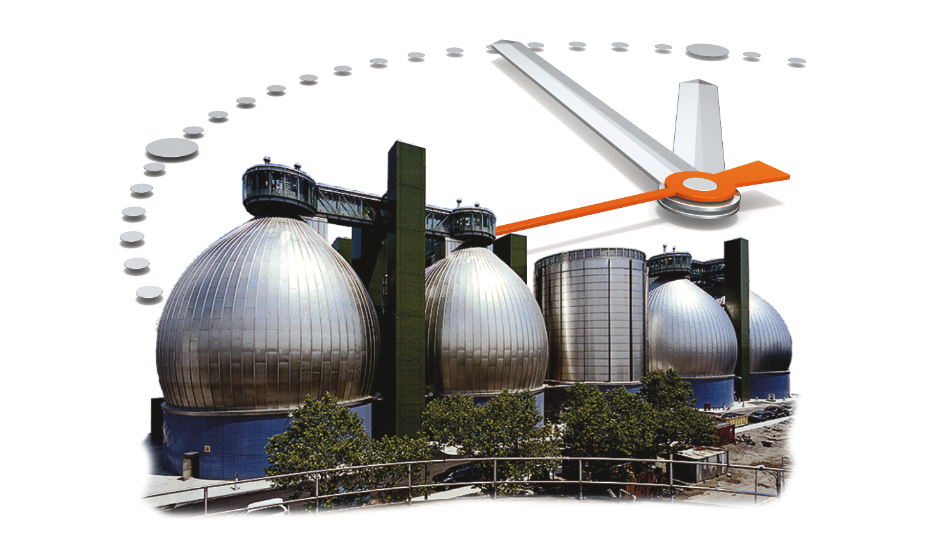All
Late to the Party?
by Ed Burke and Kelly Burke, Dennis K. Burke Inc.

National Grid says it will pivot to renewable gas and green hydrogen
In April, National Grid announced its plan to slowly transition New York away from natural gas by 2050. The utility plans to decarbonize natural gas with a mixture of renewable natural gas and green hydrogen.
It’s not surprising. New York is still heavily dependent on fossil fuels. In December, the state’s Climate Action Council decided to begin referring to natural gas as fossil gas. With more than a million buildings, New York City creates over 70% of the state’s greenhouse gas emissions, and approximately 40% of that is directly caused by the use of fossil fuels for heating water and indoor spaces.
National Grid’s climate strategy includes electrification with wind and solar power as part of the transition. “We’re going to rely on a lot of solar, wind and storage, energy efficiencies — it’s just foundational,” said Donald Chahbazpour, director of policy and regulatory strategy for National Grid. Even with full electrification, National Grid points out that a reliable power system will need natural gas or renewable natural gas on peak cold days, when the sun isn’t shining and the wind isn’t blowing.
According to National Grid, its natural gas network delivers three to four times more energy on its peak day than an electric system.
Replacing natural gas is essential to reducing the impacts of climate change – and a requirement under State law. By 2040, the intermediate composition of gas delivered to homes will gradually become 20% green hydrogen, 30% renewable natural gas, and 50% natural gas with hydrogen clusters. By 2050, the mixture running through National Grid’s existing pipelines will be 80% renewable natural gas and 20% green hydrogen, by volume.
Currently, National Grid is trying to scale up production of renewable natural gas and green hydrogen through pilot projects.
Renewable Natural Gas
National Grid’s plan calls for a slow transition to renewable natural gas, also known as biogas or biomethane.
Renewable gas is captured when methane is released from landfills, wastewater treatment plants, food waste, and livestock manure from farms. Those emissions can be collected and purified and then used in pipelines to provide gas for fuel, heat, hot water and cooking.
By capturing and utilizing these recurring emissions from waste streams that would otherwise contribute to further greenhouse gas releases, biogas is considered an environmentally friendly alternative to natural gas.
Renewable gas is chemically similar to natural gas that is currently used in buildings, and it would be delivered through the same pipelines. They both also produce a similar amount of carbon emissions when combusted.
When gas is captured from these sources, it’s 60% methane and 40% carbon dioxide. But that can’t just go into pipelines to heat homes. First, it must be purified to 98% methane by removing the carbon dioxide. Infrastructure will need to be built for purification facilities, and some additional pipeline may be constructed to take that renewable natural gas and bridge it to the existing network.
“When you really sharpen your pencil and do the analysis, you also begin to see that there is no silver bullet,” said Chahbazpour. “You need every tool in the toolkit, including some of these things like biomethane.”
Scaling up production of renewable natural gas won’t be easy. There is limited capacity to expand, and there just isn’t enough to match the current demand for natural gas.
Environmentalists say that the plan will not help reduce global warming, because the process still produces carbon emissions. Increasing demand for biogas could also motivate farms and landfills to grow in size in order to be more cost-effective. They point out that these facilities are already substantial sources of greenhouse gases. They see renewable natural gas as a back-up to full electrification powered by typical renewable sources, and not a substitute for the large amount of natural gas currently in use.
Given the emissions, the added expense, and the infrastructure required to upgrade energy systems to replace natural gas with renewable natural gas, critics don’t really see biomethane as a comprehensive solution.
Green Hydrogen
Green hydrogen, as its name suggests, is the cleanest variety in the hydrogen family, producing zero carbon emissions. It is primarily produced using electrolysis powered by renewable energy, like wind or solar power, to produce a clean and sustainable fuel.
Electrolysis splits water (H2O) into hydrogen (H2) and oxygen (O), so there is no waste and all parts are used with zero environmental impact. If the energy used for electrolysis is taken from renewable sources, this can be counted as “green fuel” because there are no negative impacts on the environment.
Green hydrogen is considered a vital tool to decarbonize sectors that are hard to electrify, such as steelmaking, chemical manufacturing and cement production, and thus help to limit climate change.
But green hydrogen would also require upgrades to existing pipelines and infrastructure. In the U.S., there are currently about 26 pilot projects aimed at injecting hydrogen into existing gas pipelines, as well as testing new hydrogen production and storage technologies.
Ed and Kelly Burke are respectively Chairman of the Board and Senior Marketing Manager at fuel distributor Dennis K. Burke Inc. They can be reached at 617-884-7800 or ed.burke@burkeoil.com and kelly.burke@burkeoil.com.
Related Posts
 Why Quality Matters in Your Biofuel Blends
Why Quality Matters in Your Biofuel Blends
Posted on June 25, 2025
 Incorporating Higher Blends of Biofuels
Incorporating Higher Blends of Biofuels
Posted on May 14, 2025
 NORA Programs at Eastern Energy Expo
NORA Programs at Eastern Energy Expo
Posted on May 13, 2025
 March Short-Term Energy Outlook
March Short-Term Energy Outlook
Posted on April 28, 2025
Enter your email to receive important news and article updates.
